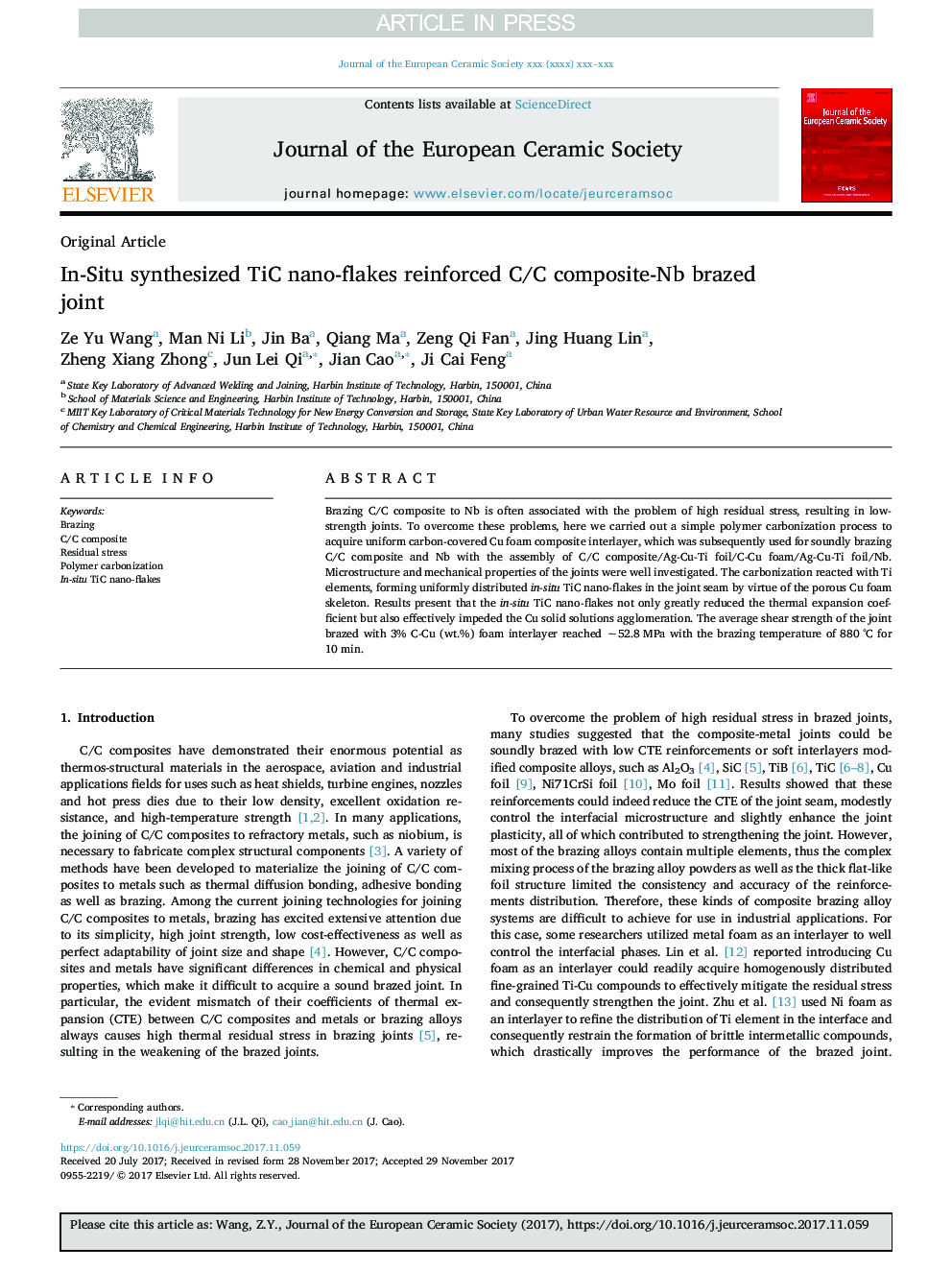| Article ID | Journal | Published Year | Pages | File Type |
|---|---|---|---|---|
| 7898467 | Journal of the European Ceramic Society | 2018 | 10 Pages |
Abstract
Brazing C/C composite to Nb is often associated with the problem of high residual stress, resulting in low-strength joints. To overcome these problems, here we carried out a simple polymer carbonization process to acquire uniform carbon-covered Cu foam composite interlayer, which was subsequently used for soundly brazing C/C composite and Nb with the assembly of C/C composite/Ag-Cu-Ti foil/C-Cu foam/Ag-Cu-Ti foil/Nb. Microstructure and mechanical properties of the joints were well investigated. The carbonization reacted with Ti elements, forming uniformly distributed in-situ TiC nano-flakes in the joint seam by virtue of the porous Cu foam skeleton. Results present that the in-situ TiC nano-flakes not only greatly reduced the thermal expansion coefficient but also effectively impeded the Cu solid solutions agglomeration. The average shear strength of the joint brazed with 3% C-Cu (wt.%) foam interlayer reached â¼52.8 MPa with the brazing temperature of 880 °C for 10 min.
Keywords
Related Topics
Physical Sciences and Engineering
Materials Science
Ceramics and Composites
Authors
Ze Yu Wang, Man Ni Li, Jin Ba, Qiang Ma, Zeng Qi Fan, Jing Huang Lin, Zheng Xiang Zhong, Jun Lei Qi, Jian Cao, Ji Cai Feng,
